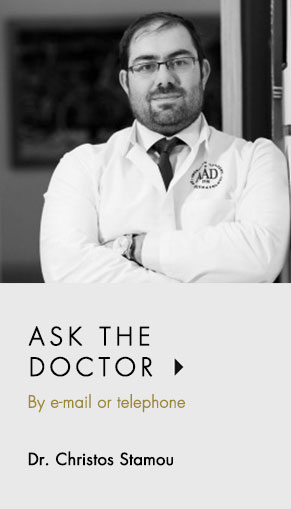What is Alopecia Areata
Alopecia areata is a type of hair loss that occurs when the skin’s local immune system mistakenly attacks the hair follicles, from which hair growth begins. Usually the damage of the hair follicles is not permanent. Specialists do not know why the immune system attacks the follicles. Alopecia areata is more common in persons aged below 20 years, but both children and adults of any age may be affected. Women and men are affected similarly.
Signs and Symptoms
If you have alopecia areata, you may have one or more of the following:
- Patchy hair loss: The problem often begins with one or more round, smooth, “bare” coin-sized. You may first notice the problem when you see clumps of hair on your pillow or in the shower. Hair loss occurs mostly on the scalp. But it can involve eyebrows, eyelashes, beards, or any hair-bearing site. Patches vary in size.
- “Exclamation mark” hairs: Often a few short hairs occur in or at the edges of the bare spots. These hairs get narrower at the bottom, like an exclamation mark.
- Widespread hair loss: With time, some patients go bald. Some lose all their body hair, too. This is not common. Also uncommon is a band of hair loss at the back of the scalp.
- Nail problems: Alopecia areata also can affect the fingernails and toenails. Nails can also have tiny pinpoint dents (pitting), white spots or lines, be rough, lose their shine, or become thin and split easily. Rarely nails change shape or fall off. Sometimes nail changes are the first sign of alopecia areata.
How do Dermatologists treat Alopecia Areata?
There are various treatment approaches for alopecia areata. Hair often re-grows on its own; the disease may be reversed on its own within two years at a rate of 80%. Treatment can help the hair re-grow more quickly. A dermatologist may prescribe one or more of the following to help the hair re-grow more quickly and disrupt the skin’s abnormal immune response:
- Corticosteroids: This medicine suppresses the immune system. It can be administered as shots; the dermatologist is injecting the medicine into the places with hair loss. Sometimes a patient gets a topical (applied to the skin) form of this medicine. It may be a cream, lotion, or ointment. The patient applies the medicine to the bare spots. Less often, patients take corticosteroid pills in significantly extensive and unexpected situations.
For adults with alopecia areata, subcutaneous injections (shots) are often the first treatment tried. Patients receive injections every 3 to 6 weeks. Hair growth begins about 4 weeks after the last injection. Sometimes, more time is required.
Topical corticosteroids are less effective than injections. This is often the best treatment for children.
Corticosteroid pills can have serious side effects. This is the reason why dermatologists do not routinely prescribe them. Pills may be a treatment choice for patients with many bald spots.
- Minoxidil: A hair re-growth medicine, minoxidil 5%, may help certain patients re-grow their hair. It is indicated for both children and adults. It is applied twice a day to the scalp, eyebrows, or beard. New hairs start to grow in about 2 months. Patients most often use this medicine with another treatment.
- Anthralin: This medicine alters the skin’s immune function. The patient applies a tar-like substance to the skin and leaves it on for 20 to 60 minutes. This is a short-contact therapy. After 20 to 60 minutes, anthralin is washed off to avoid skin irritation.
- Photodynamic therapy: The underlying logic is based on triggering a Th1-dominated immune response by applying a photosensitiser cream, and after 2 hours, exposure of the area under treatment to light at a specific wavelength.
- Topical immunostimulatory therapy , using calcineurin antagonists.
- Topical immunostimulatory therapy using chemical stimulating substances, such as DNCP. It is usually administered in more extended clinical types, because of the frequent visits that are required, and the irritation and sensitisation it causes.


